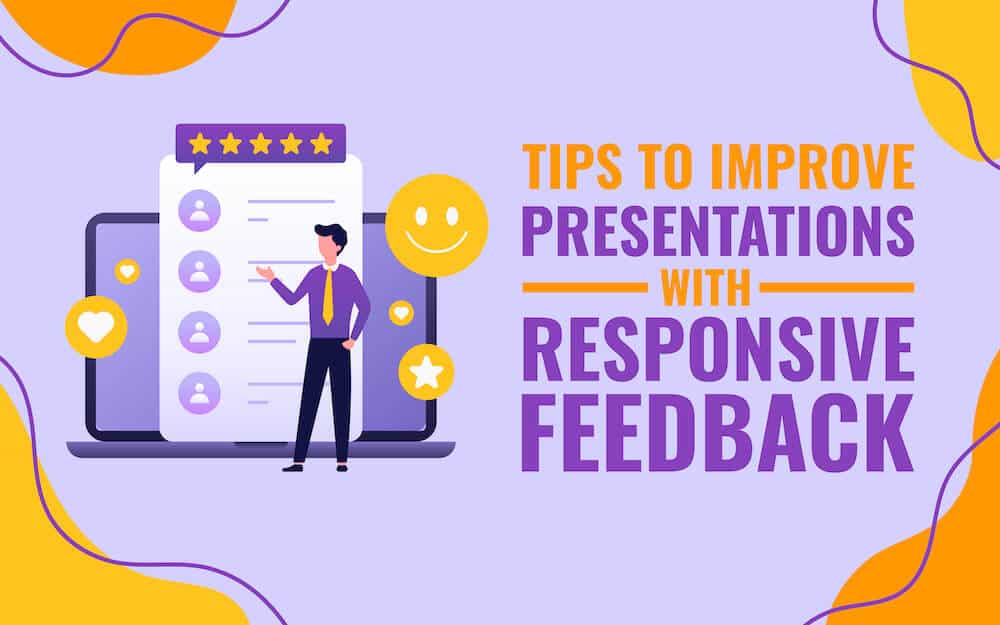
Every presentation has a specific purpose. Whether it’s a training course, a company-wide message, a sales or business pitch, presenters aim to deliver presentations that pack a wallop and make the maximum impact on the audience. However, there are instances when well-prepared presentations fall flat even if delivered perfectly. The reason is – lack of relatability. The audience members are likely to be moved only if they feel connected to your talk; else, they keep wondering why the speech was delivered.
You can make your presentations relatable to the audience if you have knowledge of different types of presentations, their purposes, what you can achieve with each presentation type, when and why you need them. In this blog post, we have covered all this information. So, before you start preparing your next presentation, give this blog post a read!
1. Persuasive Presentations
Persuasion is an art. The persuasive presentations are focused on convincing, promoting, actuating, and stimulating and rely on the principles of consensus, liking, authority, reciprocity, and scarcity. The speaker delivers a talk as a leader or influencer. Since body language has an incredible power of persuasion, your eye contact, gestures, facial expressions, and voice matter a lot.
Purpose:
- Changing the beliefs, values, and attitudes of the audience
- Influencing the audience with your ideas, opinions, and thoughts
- Convincing them to acknowledge your viewpoints and encouraging them to take required actions
When can Persuasive Presentations be Used?
- Debate
- Appealing for vote and donation
- Pitching a potential client
- Securing top management’s support for a promising solution or promising strategic initiative
- Selling a product to new or existing customers (sales pitch)
Tips for Making Persuasive Presentations a Success:
- Use logical, emotional, and ethical appeals along with various evidence, such as personal experiences, statistics, testimony, and real-life examples, to support your point or argument.
- Follow principles of ethics, i.e., integrity in the subject matter, truthfulness in the message, trustworthiness, and dignity in conduct, to earn the audience’s approval.
- Avoid incorporating additional and vague details to focus on core concepts.
- Conclude with a well-tailored and powerful call-to-action describing what will happen if the audience chooses to act.
Watch this TED talk by Bailey Parnell on “Is social media hurting your mental health?” It is a perfect example of a persuasive presentation.
2. Informative Presentations
Based on the principles of emphasis, relevance, intellectual stimulation, credibility, and creativity, informative presentations are intended to impart details about a specific topic. The presenter delivers a speech as an educator. The ethical obligations in these presentations are moderate; however, the role of visual aids, such as infographics, charts, graphs, videos, images, etc., is very crucial in making comprehension and retention of complex information easy for the audience.
Purpose:
Enlightenment, instructing, educating, training, awareness, teaching
When can Informative Presentations be Used?
- Orientation of new recruits
- Training and tutorials
- Educating the audience on a particular topic
- Making people aware of new products
- Informing employees about new policies, rules, and regulations
Tips for Making Informative Presentations a Success:
- Do thorough audience analysis to know their expectations, understanding level, how much they are familiar with your topic, and the aspects that they are not aware of.
- Complement the content with relevant visuals.
- Ask questions from the audience and add icebreaker content to enhance the interactivity of presentations.
- Project your confidence and passion while delivering your talk.
The TED talk by Mitch Resnick on “Let’s teach kids to code” is a good example of an informative presentation.
3. Inspirational Presentations
Motivation is key – whether you want to convert your dreams into reality or increase team productivity. Inspirational or motivational presentations are delivered to provide a reinvigorating perspective, influence the audience, and make a long-lasting impact. Inspirational presentations are kind of persuasive presentations, but they are highly charged, energetic, and more fervent.
Purpose:
- Generating interest
- Develop hope in uncertainty
- Making the audience realize the potential and power within them
- Empowering people to face adversities and challenges with a positive attitude
- Helping others learn from the most outstanding, courageous, and original insights
When can Inspirational Presentations be Used?
- Boosting team members’ morale
- Making new recruits feel welcome and excited to join the organization
- Convincing potential investors or clients to work with the company
Tips for Making Inspirational Presentations a Success:
- Begin with an inspirational quote.
- Include an engaging and gripping story that takes the audience from the enthralling beginning to the satisfying and fruitful end.
- You can also strengthen your slideshows by including personal motivational stories from your own life.
- Add some light moments in your presentations to allow the audience to take a deep breath, giggle, or laugh.
- Be real and share your authentic self.
The speech delivered by Jody Urquhart is the best example of an inspirational presentation. Watch the video!
4. Demonstrative Presentations
Demonstrative presentations, also known as explanation presentations, rely more on information and logic. The speaker talks as a guide or instructor and teaches the audience something new using the approach of ‘show and tell.’ Before diving deep into the details, the presenter outlines how the new knowledge will bring benefits to the viewers.
Purpose:
Teach the audience how to complete a process or task.
When can Demonstrative Presentations be Used?
- To showcase to customers how to use a product
- To illustrate guidelines for accomplishing any task
- To depict stepwise process – from start to finish
Tips for Making Demonstrative Presentations a Success:
- Choose a topic that you are genuinely interested in and have in-depth knowledge of.
- Use props, diagrams, illustrations, and videos to help the audience grab your information quickly.
- Invite questions from the audience throughout your demonstration to let them seek clarification on any step which is unclear to them.
- Before concluding the presentation, summarize the process/steps briefly.
- Provide handouts, pamphlets, or other follow-up resources, which the audience can use for future reference.
This video on “How to Make a Good PowerPoint Presentation” is the right example of a demonstrative presentation. Watch it!
5. Keynotes Presentations
Keynote presentations are delivered by keynote speakers who are well-renowned for their expertise in a specific field or who have gained immense recognition due to their accomplishments. The speakers deliver speeches based on their own knowledge and experience and set the theme/tone of the event. These presentations incorporate relevant stories as well as inspirational and motivational elements.
Purpose:
- Introducing a novel or big idea
- Revealing some big news
- Increasing the interest of the prospective attendees in a large meeting, conference, or a particular event sponsored by an association or corporation and encouraging them to attend the program/event.
When can Keynote Presentations be Used?
- Commencement and graduation ceremonies of high schools, colleges, and universities
- Opening or closing big events/conferences
Tips for Making Keynote Presentations a Success:
- Understand the context of the event before preparing the presentation.
- Understand the audience and figure out the best ways to connect with them.
- Use high-resolution visuals to support your core message.
- Back up your claims with statistics and data.
- Do enough practice to ace your delivery.
The speech delivered by Barack Obama at the Democratic National Convention in 2004 is an apt example of a keynote presentation.
No matter which type of presentation you are going to deliver, do enough practice to develop confidence and identify the areas where you need to pay more attention.
How did you find the blog post? Leave your comments below, and do share the blog post on your social handles.



